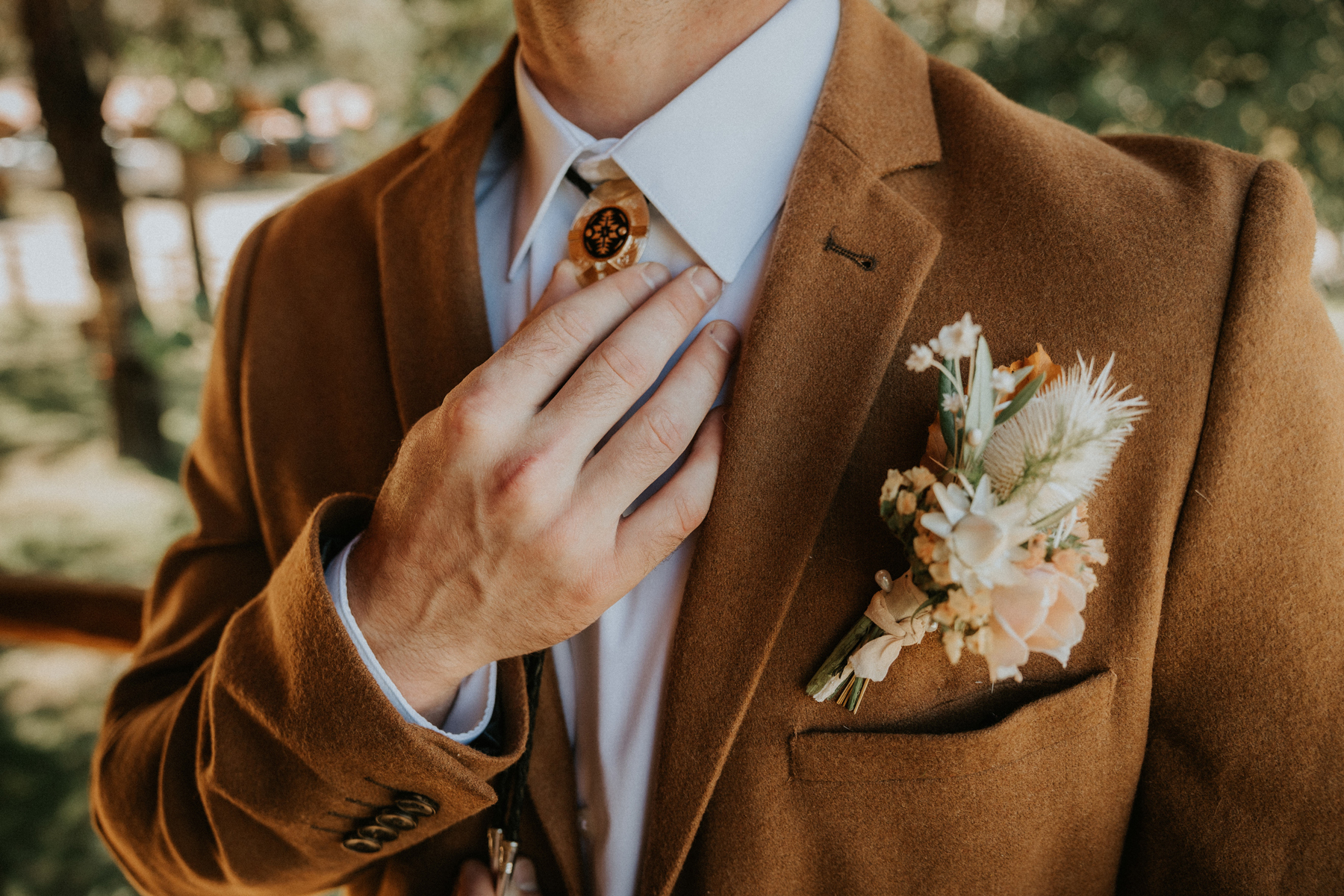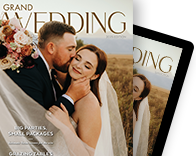An Ode to the Bolo Tie
An Ode to the Bolo Tie

Words by Christina Shepherd McGuire
It’s a thing … Really, it is.
Here in the Tetons, you’ll see the unconventional bolo tie adorning the necks of grooms, groomsmen, and wedding guests. It simply goes with the territory. This Native American custom turned cowboy fashion piece (think John Dutton and Rip Wheeler of Yellowstone) can be found in Western trinket shops, jewelry stores, and high-end art galleries. And while each piece of neck art is aesthetically pleasing, it’s often the sentiment that makes this tie a wedding staple.
The origins of the traditional necktie date back to the 17th century and the Thirty Years War in Europe (1618-1648). The French hired Croatian mercenaries who, as part of their traditional uniforms, wore knotted neckerchiefs to keep the top part of their jacket together. Towards the end of the war, French King Louis XIV took a liking to the colorful neckties and deemed the accessory—nicknamed “cravats”—mandatory at royal gatherings.
Similarly, Native American men, including those of the Zuni, Hopi, and Navajo tribes, tied bandanas around their necks with string held in place by a shell-shaped clasp. Eventually, they began to carve intricate designs into silver slides, inlaid with turquoise stones, to hold the bandana’s ends together. This style soon transferred to cowboys, who wore kerchiefs held together by slides made of leather and silver. Today, the bolo tie, sometimes called the “shoestring tie,” is a popular alternative to a formal necktie, even at weddings and especially in the American West.
“We only started carrying bolo ties two years ago because people were coming in asking about them,” says Ashley Deighton, manager of MADE in downtown Jackson. MADE carries bolo ties crafted of leather, sterling silver, and turquoise from three different artists, which can be ordered ahead of time for wedding party adornment.

Bolo ties can be worn like any other necktie. Often seen paired with a collared shirt buttoned to the top, the tie can fit either securely at your neck, with the leather ties tucked inside the collar, or loosely for a more casual look (or when things start to heat up on the dance floor). You can choose to wear a sport coat with your tie, if the wedding is of the formal variety, or pair one with a denim shirt, if the invite calls for “Western casual.” Bolo ties with small clasps pair best with narrow-collared shirts, whereas large, ornate clasps look better with wide-collared shirts. Above all, make sure your tie fits correctly and that the strings stop about three to four inches below your chest.
Kemo Sabe in Jackson carries bolos made of sterling silver, and some with an 18-karat gold overlay or a traditional turquoise inlay. They also stock vintage bolo ties and ornate ties with a scorpion clasp, complete with a turquoise centerpiece, for an out-of-the-box look. (Just make sure your beard is cut short enough to display the decorative clasp!)

Kemo Sabe welcomes wedding parties to a private event space for a personalized bolo tie (and other Western wear) shopping experience. “Upstairs, we have a fully operational bar, and no merchandise purchases are required with the event space rental,” says Haley Sisitki, event manager at Kemo Sabe. “We host welcome parties so that people can get boots, bolo ties, and hats at the beginning of the weekend to wear to the wedding.”
She explains that most of their wedding clients hold their celebration at local ranches and really dive into the Western theme. For instance, for a Moose Creek Ranch wedding, the store provided custom moose bolo ties for the groomsmen. Sisitki explains that they can make custom hats, belt buckles, and bolo ties, complete with an inscription of the wedding date or other adornments, but they need to know a few weeks ahead of time to send the order to their manufacturing “ranch.”
Maybe you have Native American ancestry, and this cultural piece is a must-wear on your wedding day. Or maybe your grandpa owns a ranch in Kelly and your wedding’s hoedown theme requires guests to dress the part. Or maybe you simply like the style for its casual simplicity, complete with a historical past. The bolo tie is a mountain wedding trend that allows guests to relax into a casual atmosphere, free of the stuffy necktie. And you can even wear one with a tuxedo. (But don’t tell anyone we said so.)

